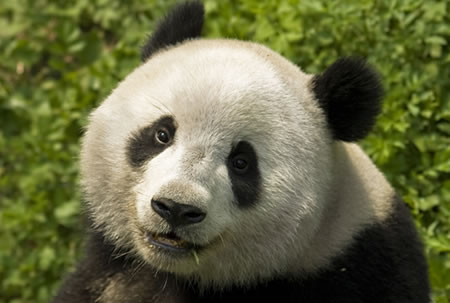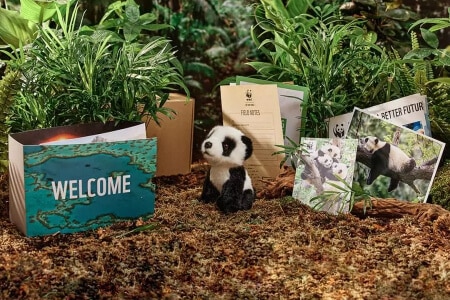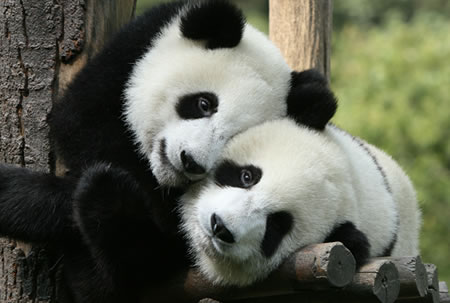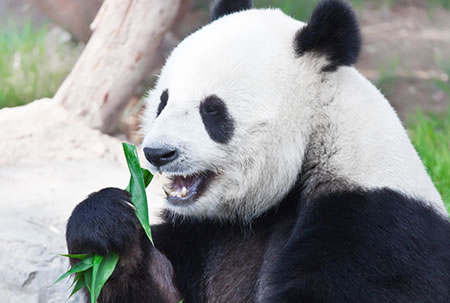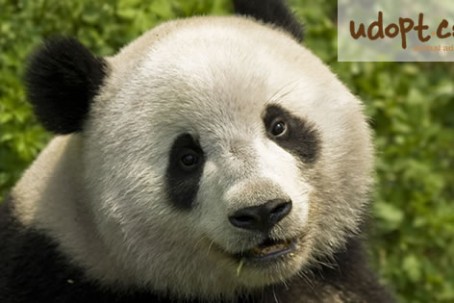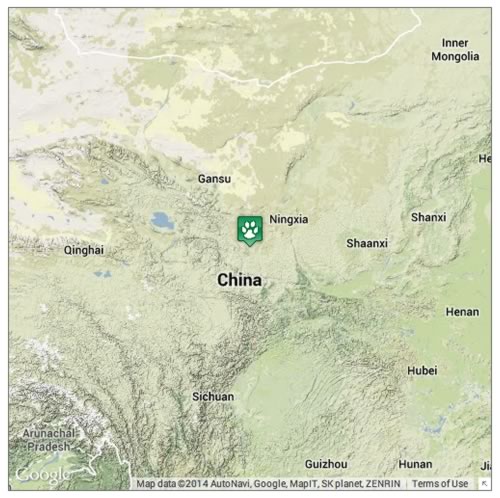Adopt a panda and receive
- A cuddly toy of your panda.
- A panda factbook with lots of interesting information, plus bookmarks and stickers.
- An adoption certificate to frame your commitment to the WWF (printed on recycled paper).
- Two exclusive magazines: WWF’s ‘Wild World’ and ‘My Panda’ with news and updates for your adopted animal.
udopt'r choice
Giant pandas are gentle animals who are happy to spend time on their own and just love to eat! They use their highly developed sense of smell to avoid other pandas, and also to find mates in the spring. They love to climb trees and are surprisingly really strong swimmers. They spend much of their time eating bamboo and sleeping.
udopt it because
- There are only 1,860 giant panda’s left in the world today.
- Your kind donation will help provide the funds for WWF to create ‘green corridors’ to link isolated pandas, patrol against poaching, and help to stop the illegal logging of their habitat.
- A cuddly toy makes this an ideal gift for children.
- It’s great as a last-minute gift as the gift certificate can be printed or emailed immediately following payment.
- Adoption programmes start from as little as £3.00 a month.
>> Adopt a Panda Today
Adopt a Panda Gallery
WWF Adopt an Animal Information
Since 1961 WWF have been advocating and giving a voice to the animal kingdom. Recognised for their work internationally udopt is proud to feature WWF animal adoptions programmes. Adopt and you will receive a gift pack including a cuddly toy (or a personalised book with a Tiger adoption), a certificate plus lots more. You'll also get regular updates throughout the year.
https://wwf.org.uk/UK Registered Charity Number 1081247
Delivery information
By Post :
FREE Delivery Your gift pack will be delivered within the UK FREE of charge. Your package will be sent out within 2 business days, but please allow up to 5 days for delivery.
Last Minute Gift? :
Left it until the last minute? The good news is you can still receive a gift certificate to print or email up to the big day! You will then receive the gift pack within 10 days of ordering!
Did you know?
- Panda’s absolutely love to eat, and mange to consume up to 15% of their bodyweight for up to 12 hours a day!
- Pandas are really shy and don’t like to venture into areas where people live.
- Pandas can live to become up to 30 years old, and can begin to have cubs at 6 years old.
- Giant pandas can weigh up to 300 pounds, we’re not surprised if they eat for up to 12 hours a day!
- Even though they don’t move around a lot, giant panda’s are great climbers and keen swimmers!
Our panda says…
Please adopt me today and help to halt the decline in my brothers and sisters across the globe. There are only 1,860 of us left in the wild now due to illegal logging and poaching, and many of us now live in the mountains, separated from one another. By helping WWF you are helping us too and the next generation of panda’s live in the wild.


